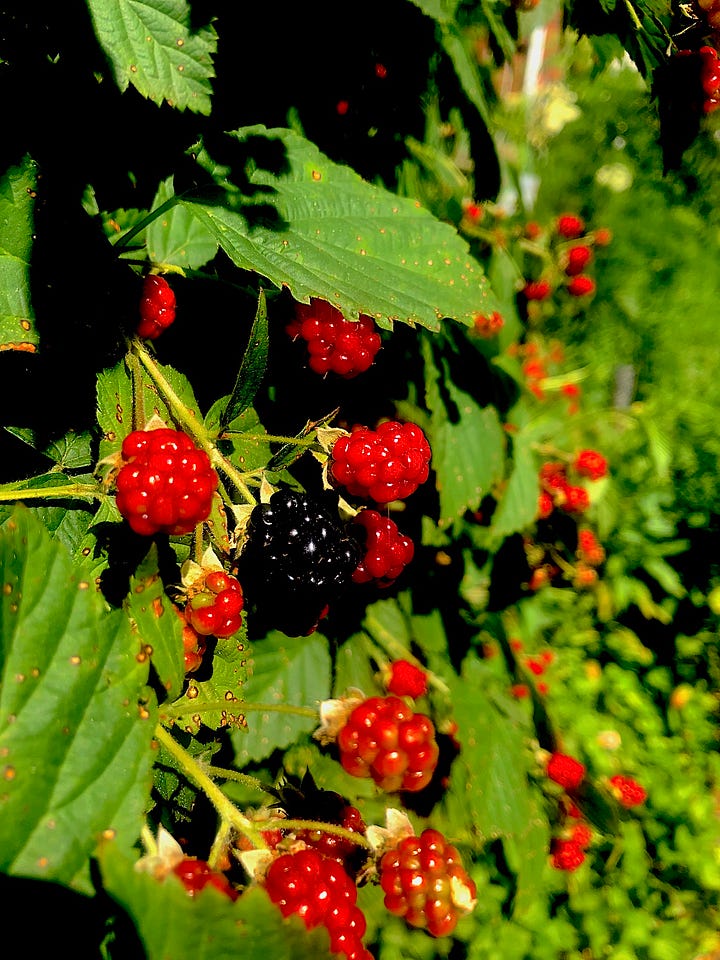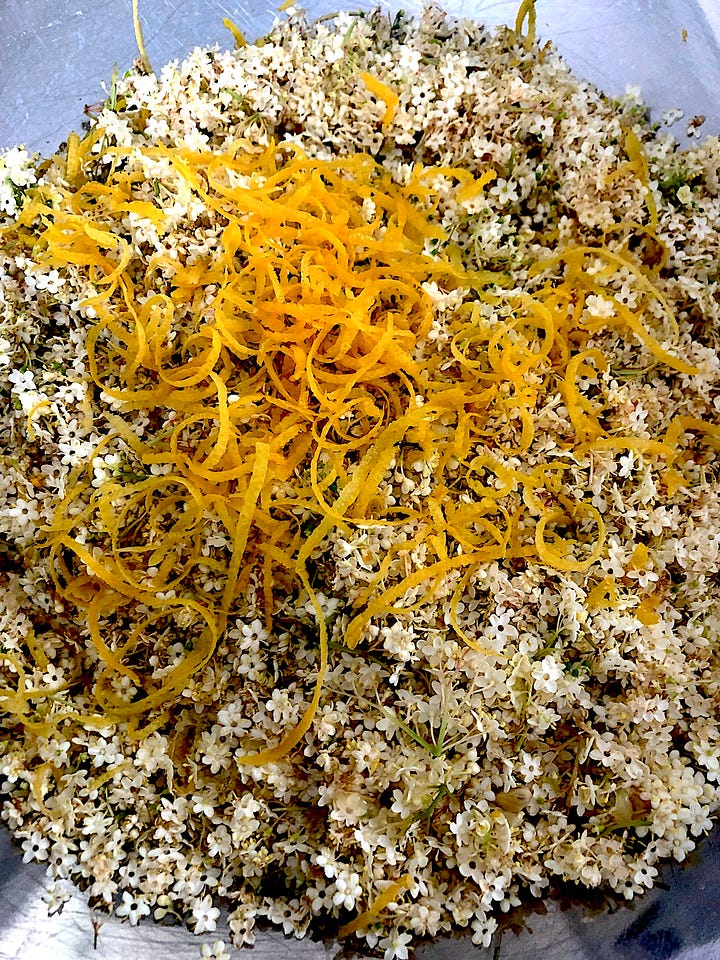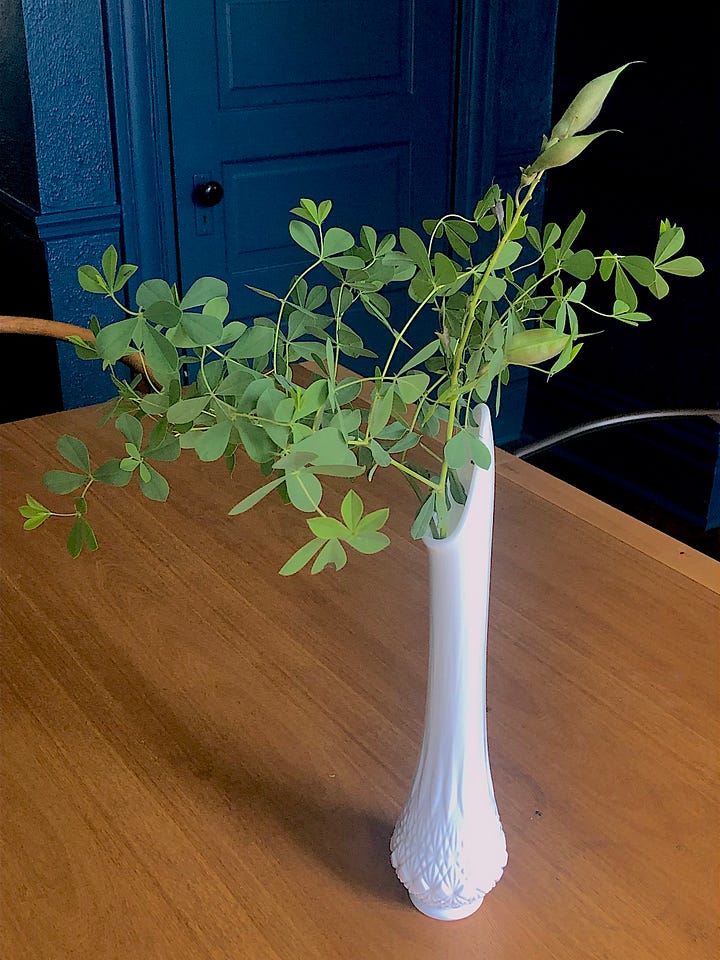Some for the birds, and some for us
The native plants that fed us with a feast of flora and food for all.
By Lisa Brunette
When we embarked on this major undertaking back in 2018, we began with native plants. They were the lynchpin in our effort to rehabilitate the 1/4-acre expanse of invasive weeds, ornamental exotics, and turf grass that comprised our suburban yard. Today natives form the basis of our ‘homestead habitat,’ drawing in pollinators, offering food and shelter to a wide range of species, and nurturing the soil that supports our food-garden plants.
They’re also incredibly easy to grow.
When I mentioned the heartache that can naturally accompany efforts to garden for your own food supply, I wasn’t talking about native plants. Well adapted to their region, if you put them in a spot very much like the one they’ve evolved to naturally occupy, they’ll thrive without any attention from you.
Many of them are edible, too. I’ve already raved about our native persimmon tree and maypop vines. I’ve also shared a recipe for spice cookies that makes use of persimmon pulp.
But that just scratched the surface in the edible native category. Here are a few more.
Our paw paw tree bloomed for the first time last spring and produced fruit. Pollinated by flies, paw paws sometimes require drastic measures such as hanging rotting meat in its branches to attract pollinators—or hand-pollinating with a brush—but flies found ours on their own.


Unfortunately, just as the fruit ripened, a critter claimed it for its meal. Oh, well… maybe we’ll get some next time.
Not many people know this, but blueberries are native to North America. The blueberry bushes were one of the first food plants we installed, back in 2018, but we only get a handful of berries each year, likely due to the lack of acid in the soil, despite my many attempts to amend it organically. The native blackberries, however, came in one huge flush… only the birds got them before we did. We might have to net them to save some for ourselves.


One native fruit plant we don’t have to net because it’s so productive, there’s plenty for us and to spare is elderberry. This powerhouse produces masses of edible flowers on umbel clusters that turn into edible berries, well known for their immune-system benefits.
We made elderflower syrup and elderberry oxymel, both useful tonics during the winter cold and flu seasons. Later in the year, when it’s elderberry season, we’ll walk you through the steps for these.




Those are all of the obvious edibles, as they bear fruit. But a great deal of our native flowers, grasses, and herbs have a long medicinal history, too. For a few years now I’ve harvested native plants I use for their health benefits in teas and elixirs:
Coneflower, goldenrod, bee balm, and yarrow
Violet, vervain, and geranium
Hairy and slender mountain mints
Evening primrose and hyssop (Agastache foeniculum, not true hyssop)
From The Late Prepper, I’ve learned I can use the boneset (Eupatorium perfoliatum) that grows here in proliferation as a fever reducer1. And my shrubby St. John’s wort, useful as a calming tea, grew mature enough this past fall for me to harvest for the first time.



Another useful aspect of native plants in the home garden is as a nitrogen fixer. I once attended a lecture given by Dean Gunderson of Seed St. Louis on tips for creating home orchards. He mentioned Amorpha fruticosa (false indigo bush) as a good companion plant for fruit trees due to its nitrogen-fixing quality, converting atmospheric nitrogen into nitrogen compounds other plants can access through their roots in the soil. A similar plant—with nearly an identical name!—that does the same is blue false indigo (Baptisia australis). We’ve used both throughout our garden.




I’m always looking for plants with ‘stacked functions,’ which is a permaculture phrase to describe those with multiple benefits—for example, a nitrogen fixer that also hosts pollinators like both indigo plants, or our native violet, which is a host plant for fritillary butterflies, edible for humans, and a soil-stabilizing ground cover to boot.
But not every plant must have a direct human use. Even the ones that are strictly ‘for the birds’ are beneficial to us in a world in which we’ve lost one-fourth of our blue jay population, to cite one sobering stat.
I leave you with three native plants that qualify in that regard—or at least, I have yet to uncover their direct human use. (If you know one, please clue me in!) I hope these images inspire you as you plan this year’s garden.



Please see our medical disclaimer.




